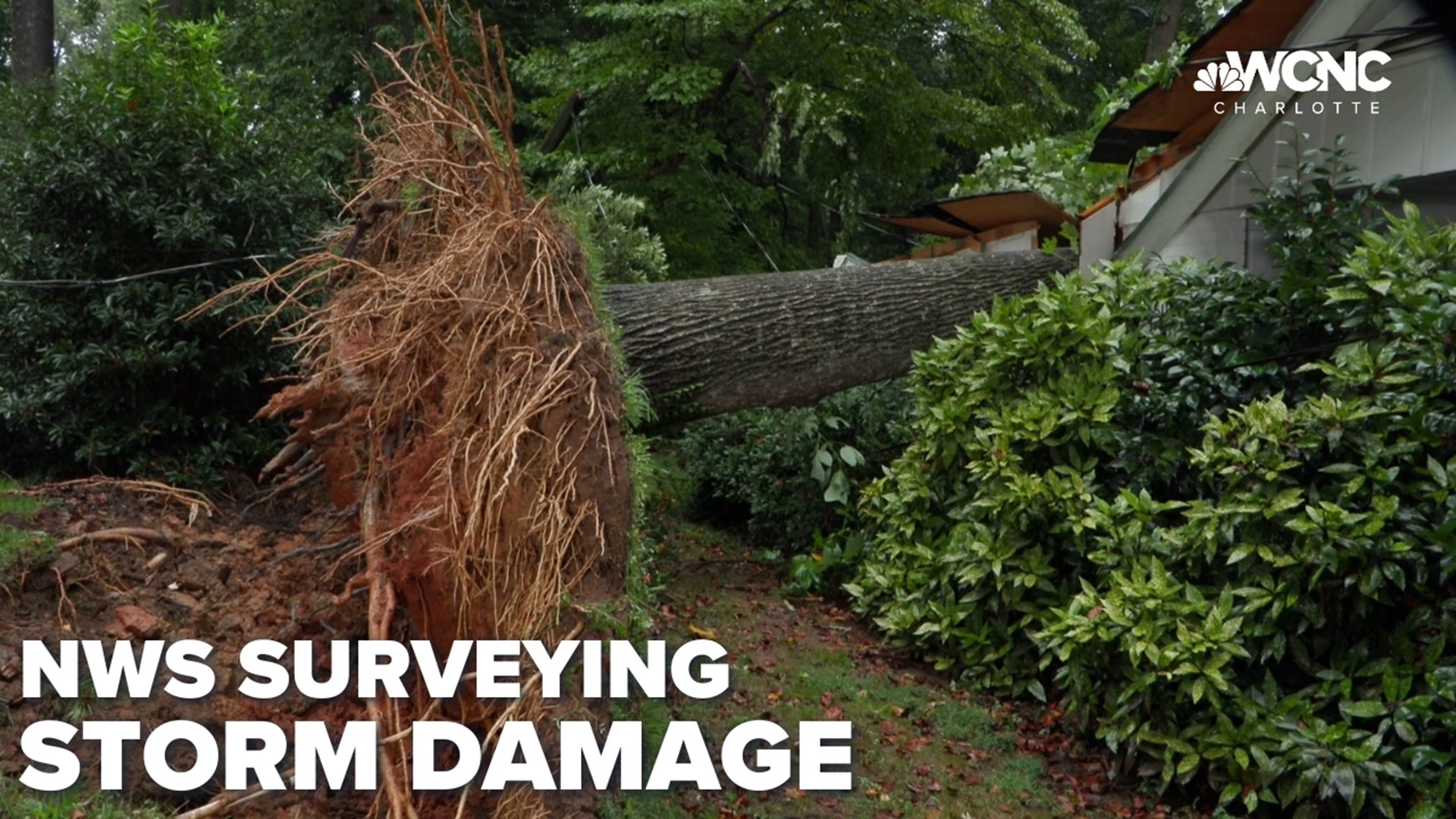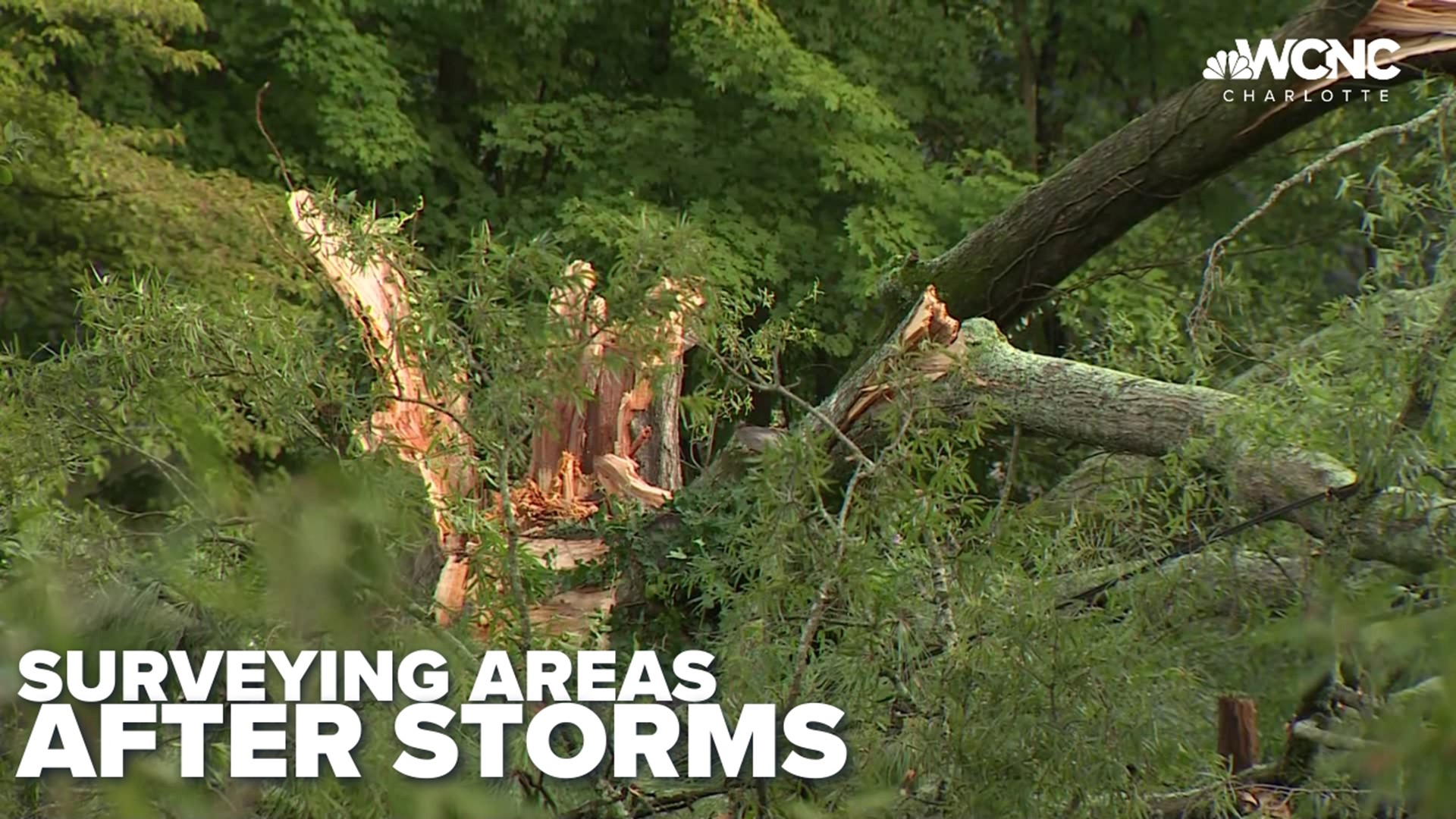HUNTERSVILLE, N.C. — Most of the damage from Monday's record-breaking severe weather outbreak in the Carolinas was caused by destructive thunderstorm winds.
While the National Weather Service has confirmed two tornadoes, it was the winds, which at times stretched 25-miles wide and reached 80 mph, that caused most of the damage.
"Your damage is not diminished by what caused it," WCNC Charlotte Chief Meteorologist Brad Panovich explained. "The damage from straight-line winds is often more widespread and as severe as tornadoes."
No area saw worse winds than Catawba County, where the National Weather Service found evidence of straight-line winds. Those winds measured 80 mph strong, 14 miles long, and 7.5 miles wide. If those winds were associated with a hurricane, they would be considered winds associated with a category 1 storm.
The National Weather Service, who visited some of the hardest hit areas Tuesday a day after the storm, found evidence of two tornadoes.
Adjusted to the straight-line wind damage, officials found an EF1 tornado tracked through portions of Catawba, Iredell, and Rowan counties on Monday. The tornado had peak winds of 110 mph and touched down on Kelly Boulevard between Conover and Claremont. Along the way, the tornado snapped trees and brought down power lines.
The tornado crossed NC Highway 10 near Murrays Mill Road, snapping and uprooting additional trees before crossing over Lake Norman into Iredell County. As the tornado approached Mooresville it continued to knock down several trees despite weakening to an EF0 strength with winds less than 85 mph. The tornado regained EF1 strength as it made its way to Rowan County, snapping and uprooting more trees near Highway 152 before losing intensity near Landis.
In their initial analysis Tuesday, officials found a second tornado, an EF0 with winds upward of 85 mph, was also found near Huntersville. On Thursday, officials updated their findings to extend that tornado track to a total of 2.15 miles long.
Regardless of their findings, the extent of the storm damage is the same to the thousands of homeowners who were without power for hours after the storm.
Many people are still working to clean up storm debris including downed trees, some of which fell Monday onto homes and vehicles.
At least two injuries were reported Tuesday in the greater Charlotte area as a result of the storms, which produced more damage reports than any other day in the western Carolinas in the past two decades.
You can stream WCNC Charlotte on Roku, Amazon Fire TV and Apple TV, just download the free app.
WCNC Charlotte’s Weather IQ YouTube channel gives detailed explainers from the WCNC Charlotte meteorologists to help you learn and understand weather, climate and science. Watch previous stories where you can raise your Weather IQ in the YouTube playlist below and subscribe to get updated when new videos are uploaded.




